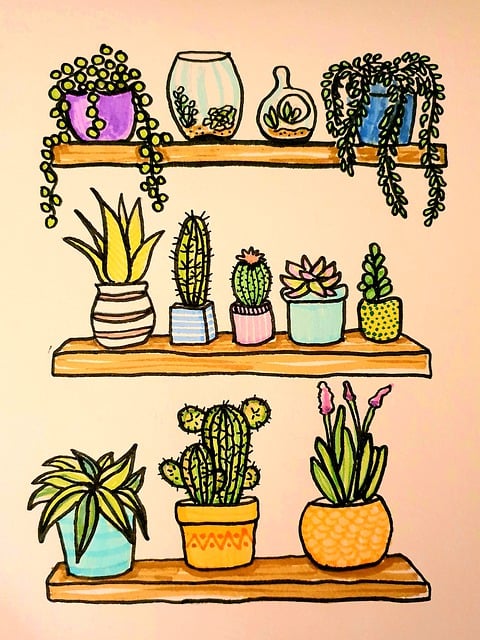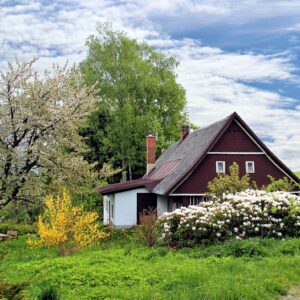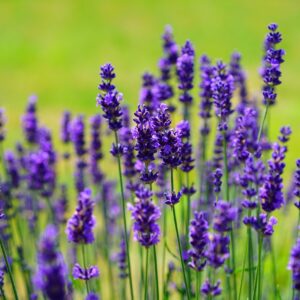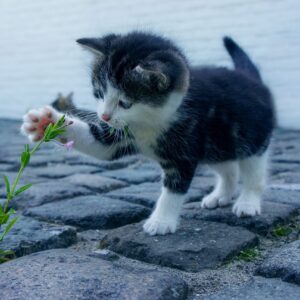Are you living in a small space and looking for ways to bring some life and colour into your home? Incorporating houseplants is a great way to add natural beauty and health benefits to your living space. Not only do houseplants purify the air, but they also create a calming and relaxing atmosphere. However, choosing the right plants and creating a suitable environment for them can be a challenge, especially in limited space. But fear not, with the right tips and tricks, you can create a thriving indoor garden in even the smallest of spaces. In this article, we will provide you with essential tips for incorporating houseplants in small spaces, including selecting the right plants, creating a suitable environment, maximizing space with creative displays, and maintaining healthy houseplants. So, get ready to transform your small space into a lush and vibrant oasis with these expert tips.
Benefits of Houseplants in Small Spaces
Having plants in tight quarters can make a world of difference for your well-being. When you’re living in a small space, indoor gardening can give you a sense of purpose and accomplishment. It’s a great way to bring nature indoors and create a calming atmosphere.
Houseplants not only add to the aesthetic of your home, they also have numerous benefits for your mental health. Studies have shown that indoor plants can reduce stress and anxiety, boost productivity, and improve air quality.
Incorporating houseplants in small spaces can also help you feel more connected to nature. It’s easy to forget about the natural world when you’re living in a concrete jungle, but having plants around can remind you of the beauty that exists outside your door.
Even if you don’t have a backyard or a balcony, you can still enjoy the benefits of gardening by creating a small indoor garden. With a little bit of creativity and some patience, you can turn your small space into a thriving oasis of greenery.
Choosing the Right Plants for Your Space
To ensure your green friends thrive, it’s important to select flora that’s suited to your area and can fit comfortably in your abode.

Consider the amount of sunlight your space receives and choose plants accordingly. If you have a sunny spot, succulents and cacti are great options as they require minimal watering and love the sun.
If your area is more shaded, try ferns or snake plants which thrive in low-light conditions.
Indoor gardening also means considering the size of your space and the plants you choose. If you have limited floor space, consider hanging planters or placing plants on shelves and tables.
You can even create a vertical garden using a trellis or wall-mounted planters. The key is to make sure your plants have enough room to grow and aren’t overcrowded.
With the right plant placement and selection, you can enjoy the benefits of houseplants even in small spaces.
Creating a Suitable Environment for Your Houseplants
Make your houseplants thrive by creating an environment that caters to their needs and evokes a sense of calm and tranquility in your home.
Start with indoor lighting. Determine the amount of natural light your space receives and choose plants that thrive in that type of light. If your space is limited, consider investing in grow lights to supplement natural light. Keep in mind that different plants require varying degrees of light, so be sure to research the specific needs of your chosen plant.
Next, consider the soil type. Most houseplants need well-draining soil that is rich in nutrients. This means avoiding compacted or heavy soils and opting for a mix that includes perlite, vermiculite, or sand. If you prefer not to mix soil yourself, many garden centers sell pre-mixed soils that are specifically designed for houseplants.
Additionally, be sure to choose a pot with good drainage to prevent water from accumulating and causing root rot.
By creating the right environment for your houseplants, you can help them thrive and bring life and beauty to your small space.
Maximizing Space with Creative Plant Displays
Want to add some greenery to your home but limited on space? Get inspired with creative plant displays that maximize your available area!
One way to do this is by utilizing vertical plant displays. These can be made by attaching shelves or hanging planters to your walls or even using a trellis to create a living wall. This not only adds a unique and eye-catching feature to your space but also frees up valuable floor space.
Another way to maximize space with creative plant displays is by repurposing everyday items as planters. This can include using mason jars, tea cups, or even old boots as planters. Not only does this add a touch of personality to your space but it also allows you to add greenery in unexpected ways. Just make sure to ensure proper drainage and use a suitable soil mix for your plant’s needs.
With a little creativity, incorporating houseplants into your small space can be easy and fun!
Maintenance and Care Tips for Healthy Houseplants
Taking care of your indoor plants doesn’t have to be a hassle – with a little know-how and some TLC, your green friends can thrive and add beauty to your living space.
One of the most important things to keep in mind is watering frequency. While it can be tempting to douse your plants with water every day, this can actually do more harm than good. Overwatering can lead to root rot and other problems, so it’s important to let the soil dry out between watering sessions. On the other hand, underwatering can also be detrimental, so it’s important to strike a balance and water your plants when the soil feels dry to the touch.
Another crucial aspect of plant care is choosing the right soil type. Different plants have different soil requirements, so it’s important to do some research before potting them. Some plants prefer well-draining soil while others thrive in soil that retains moisture. It’s also important to choose a potting mix that contains the right nutrients for your plants.
A good rule of thumb is to choose a potting mix that is specifically formulated for indoor plants. With a little bit of attention and care, your houseplants can thrive and bring a touch of nature to your small living space.
Frequently Asked Questions
How do I know if my houseplant is getting enough sunlight in a small space?
To ensure that your houseplant is getting enough sunlight in a small space, you need to consider the natural light sources in your home and the placement of your plant.
First, identify the direction of your windows and how much direct sunlight they receive. South-facing windows receive the most light, while north-facing windows receive the least. East-facing windows receive morning sun, and west-facing windows receive afternoon sun.
Once you know the light conditions in your space, choose a location for your plant that matches its needs. For example, plants that require bright, direct sunlight should be placed near south or west-facing windows.
Finally, make sure to include your plant’s light requirements in your indoor plant care routine, and adjust the placement of your plant if it starts to show signs of too much or too little light.
Can I use fake plants instead of real ones in a small space?
As the old adage goes, “Fake it till you make it.” While this may apply to many areas of life, when it comes to incorporating plants in small spaces, it’s important to consider the benefits of both real and artificial options.
While real plants have the added benefit of improving air quality and providing a natural aesthetic, they can also require more maintenance and may not thrive in certain environments. On the other hand, artificial plants can provide a low-maintenance solution and can be more versatile in terms of placement and design.
Ultimately, the decision between fake and real plants in a small space will depend on your personal preferences and needs. However, it’s important to remember that the benefits of artificial plants extend beyond their convenience – they also provide a sustainable option that can reduce waste and promote eco-friendliness.
How do I prevent pests from attacking my houseplants in a small space?
If you’re dealing with pests attacking your houseplants in a small space, there are several things you can do to prevent them.
First, make sure you’re not overwatering your plants as this can create a damp environment that pests love.
Additionally, regularly inspect your plants for any signs of pests and remove any affected leaves or stems immediately.
You can also try using natural pest control methods such as neem oil or insecticidal soap.
Finally, if you’re bringing new plants into your small space, quarantine them for a few weeks before placing them near your other plants to ensure they’re pest-free.
With these pest prevention tips and small space solutions, your houseplants can thrive without the interference of unwanted visitors.
Is it safe to keep houseplants in a room with pets or small children?
If you have pets or small children, you might be wondering if it’s safe to keep houseplants in the same room. The good news is that there are many pet-friendly houseplants that are non-toxic to cats and dogs, such as spider plants, Boston ferns, and African violets.
However, it’s still important to child-proof your houseplants by keeping them out of reach and avoiding plants with small parts or thorns. Additionally, it’s a good idea to monitor your pets and children to make sure they’re not eating or playing with the plants.
By choosing the right plants and taking precautions, you can enjoy the benefits of houseplants without worrying about your furry friends or little ones.
How do I dispose of dead or dying houseplants in a small space?
Disposing of dead or dying houseplants in a small space can be a challenge, but it’s important to handle it properly.
Did you know that according to the EPA, yard trimmings and food residuals make up 28% of the solid waste sent to landfills?
This means that composting options are a great way to repurpose dead plants. You can create a compost bin in your small space using a container with holes for air circulation and a mix of browns (dried leaves, twigs, newspaper) and greens (vegetable scraps, coffee grounds, dead plants).
As the materials break down, you’ll be left with nutrient-rich soil that can be used to nourish future plants. By repurposing dead plants through composting, you’re not only reducing waste but also creating a sustainable cycle of growth in your small space.
Conclusion
Congratulations! You’ve successfully incorporated houseplants into your small space. Not only do they add a touch of greenery and life to your home, but they also provide numerous benefits such as purifying the air and reducing stress levels.
Remember to choose plants that are suitable for your space and create a suitable environment for them to thrive. Don’t be afraid to get creative with your plant displays to maximize space. And most importantly, don’t forget to give your plants the love and care they need to stay healthy and happy.
Just like a symphony, your small space can now be filled with the harmonious rhythm of your houseplants. With your newfound knowledge and experience, you can continue to expand your collection and enjoy the many benefits that come with incorporating nature into your home.
Keep up the great work!





